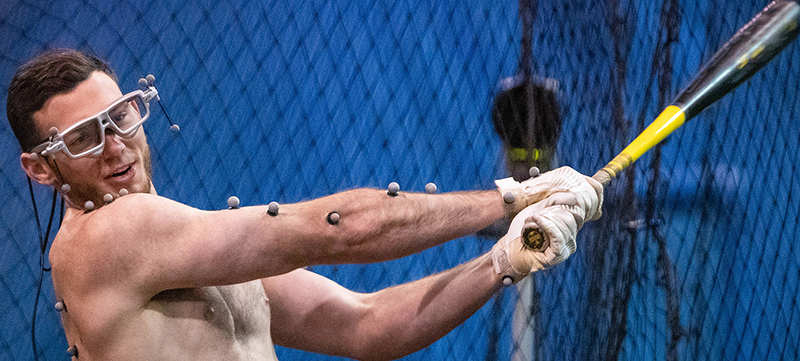It is very hard to master the skills of a baseball swing, as there are numerous mechanical aspects involved. For players, it could take months, years or even decades to master this skill. Players and coaches need to understand the art of proper swing mechanics and practice it over and over to become an accomplished hitter. East Carolina University is using wearable sensors to understand this skill and help players become better hitters.
Related Nexus Uses Revolutionary Tracking Technology for CrossFit Athletes to Quantify Their Workout
Using motion-capture and eye-tracking technology, ECU wants to help players and coaches know what hitters see, how and why they react to it, and, ultimately, turn them into better players. Specifically, they are focusing on what a hitter’s eyes see as a pitch is hurling toward them at upward of 100 miles per hour and how the brain processes that visual information and then instructs the body to swing. It’s the science of hitting.
The study is led by ECU kinesiology faculty members Nick Murray and Patrick Rider. The researchers, along with a group of students tested hitters last fall at Next Level Training Center in Greenville. Test batters from high school to semi-pro levels were fitted with dozens of sensors as well as special goggles to track their eye movements as they watched and then swung at pitches, said a press release.

“Baseball batting is a cognitively demanding interceptive timing task that requires precision and power,” said Murray, an associate professor and director of the Visual Motor Lab in the College of Health and Human Performance.
Although previous research showed that expert hitters can sport a moving object very well, not many researches connected that ability with head position and movement control.
Related SOLOS Smartglasses Collaborates with CTS to Provide Cutting-Edge Technology to Coaches and Athletes
“And the fact we’re studying eye-tracking during a realistic at-bat – that is, using a pitcher instead of a machine – makes this study unique,” Murray added.
Next Level owner Trent Britt said:
“We don’t really get an opportunity to see things from a scientific perspective and what the body is doing. This is one more set of data points. This is the way sports and baseball are headed. Hitting and anything involving movement is very much an evolving science. It gives us a chance to question are we seeing what we think we’re seeing and help kids get better.”












